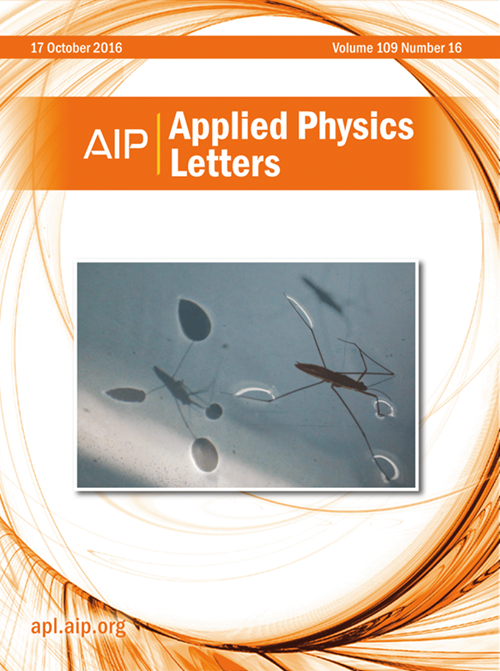Optical refrigeration of Tm3+ doped indium fluoride glass from room temperature
IF 3.5
2区 物理与天体物理
Q2 PHYSICS, APPLIED
引用次数: 0
Abstract
Optical refrigeration has significant promise for vibration-free cryogenic cooling and radiation-balanced fiber lasers. In this paper, we report theoretical and experimental investigations of optical refrigeration in thulium (Tm3+) doped indium fluoride glass (Tm3+:InF3) from room temperature. Comprehensive spectroscopic studies of Tm3+:InF3 were conducted, and its cooling with 1875, 1900, and 1950 nm pump lasers at different power levels has been measured. Maximum cooling of 2.4 K was achieved with 4.4 W from a 1900 nm laser. The experimental results agree with our theoretical expectations. Our experiment has demonstrated that Tm3+:InF3 has better cooling efficiency than Tm3+ doped ZrF4-BaF2-LaF3-AlF3-NaF glass due to Tm3+:InF3's lower maximum phonon energy, which reduces non-radiative decay.掺杂Tm3+氟化铟玻璃的室温光学制冷
光学制冷在无振动低温冷却和辐射平衡光纤激光器方面具有重要的应用前景。本文报道了室温下掺铥(Tm3+)氟化铟玻璃(Tm3+:InF3)光学制冷的理论和实验研究。对Tm3+:InF3进行了全面的光谱研究,并测量了其在1875、1900和1950 nm不同功率下的冷却情况。1900 nm激光输出功率为4.4 W,最大冷却温度为2.4 K。实验结果与我们的理论预期相符。我们的实验表明,Tm3+:InF3比Tm3+掺杂的ZrF4-BaF2-LaF3-AlF3-NaF玻璃具有更好的冷却效率,这是由于Tm3+:InF3的最大声子能量更低,减少了非辐射衰变。
本文章由计算机程序翻译,如有差异,请以英文原文为准。
求助全文
约1分钟内获得全文
求助全文
来源期刊

Applied Physics Letters
物理-物理:应用
CiteScore
6.40
自引率
10.00%
发文量
1821
审稿时长
1.6 months
期刊介绍:
Applied Physics Letters (APL) features concise, up-to-date reports on significant new findings in applied physics. Emphasizing rapid dissemination of key data and new physical insights, APL offers prompt publication of new experimental and theoretical papers reporting applications of physics phenomena to all branches of science, engineering, and modern technology.
In addition to regular articles, the journal also publishes invited Fast Track, Perspectives, and in-depth Editorials which report on cutting-edge areas in applied physics.
APL Perspectives are forward-looking invited letters which highlight recent developments or discoveries. Emphasis is placed on very recent developments, potentially disruptive technologies, open questions and possible solutions. They also include a mini-roadmap detailing where the community should direct efforts in order for the phenomena to be viable for application and the challenges associated with meeting that performance threshold. Perspectives are characterized by personal viewpoints and opinions of recognized experts in the field.
Fast Track articles are invited original research articles that report results that are particularly novel and important or provide a significant advancement in an emerging field. Because of the urgency and scientific importance of the work, the peer review process is accelerated. If, during the review process, it becomes apparent that the paper does not meet the Fast Track criterion, it is returned to a normal track.
 求助内容:
求助内容: 应助结果提醒方式:
应助结果提醒方式:


